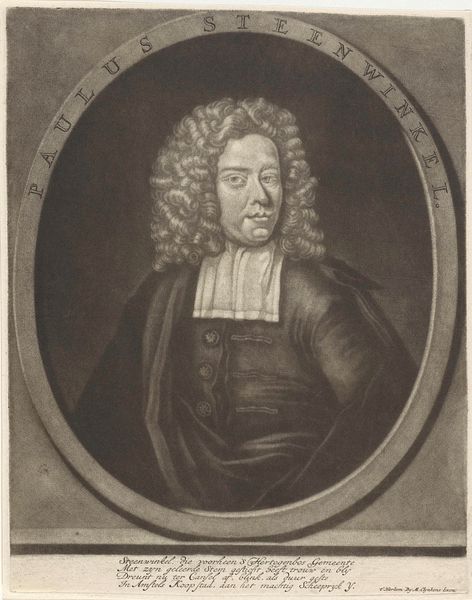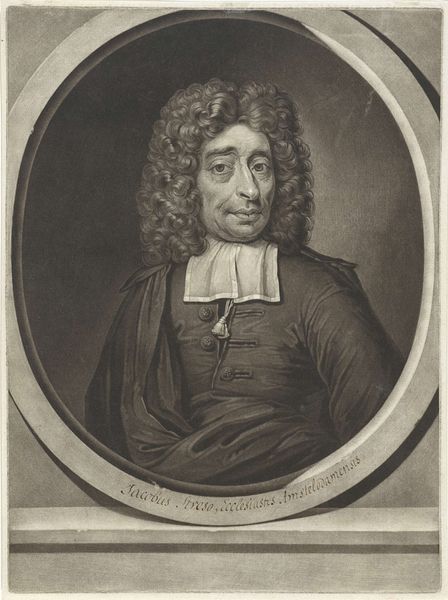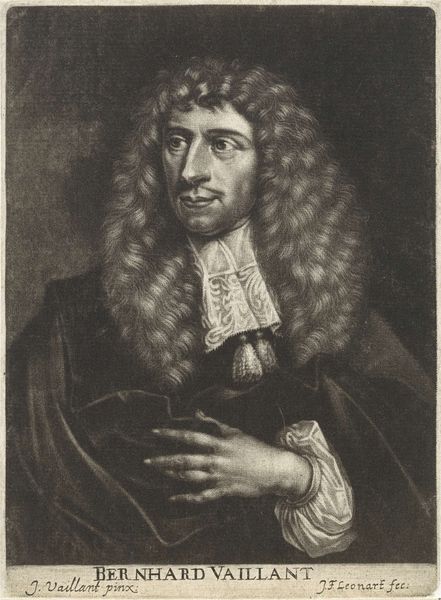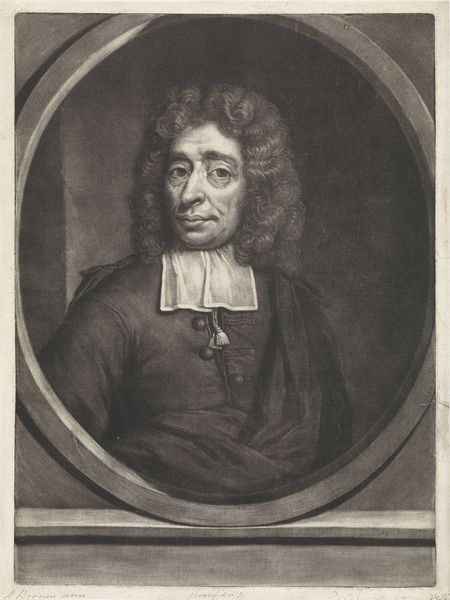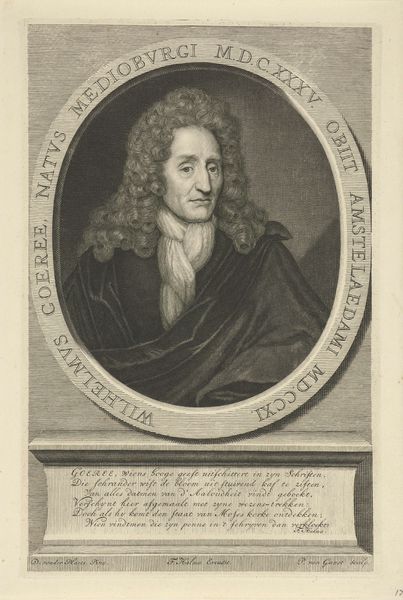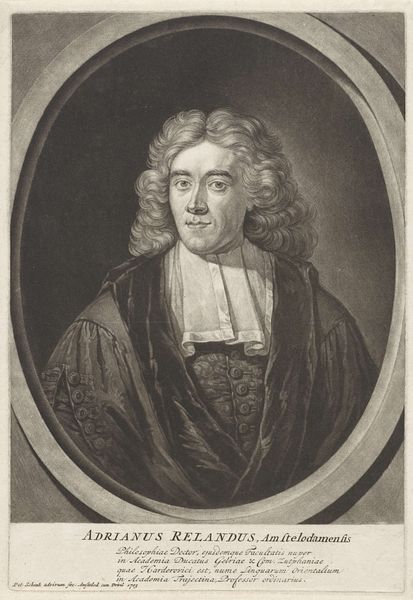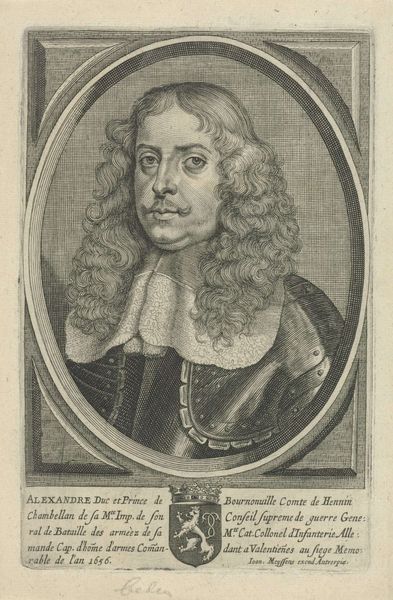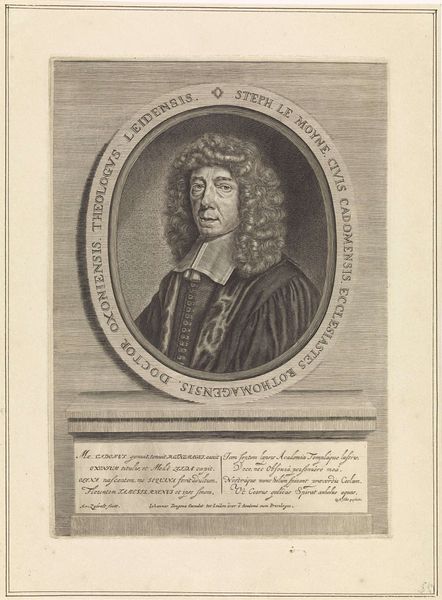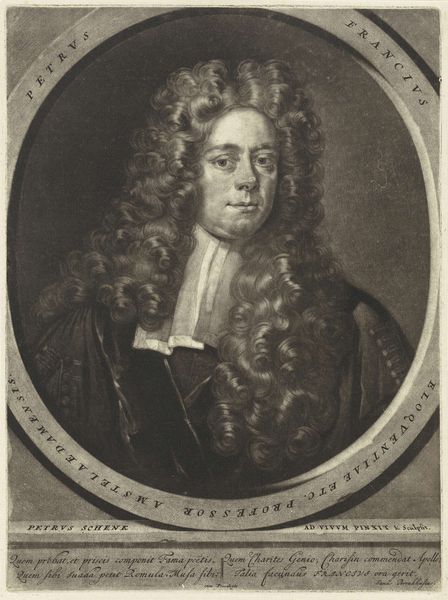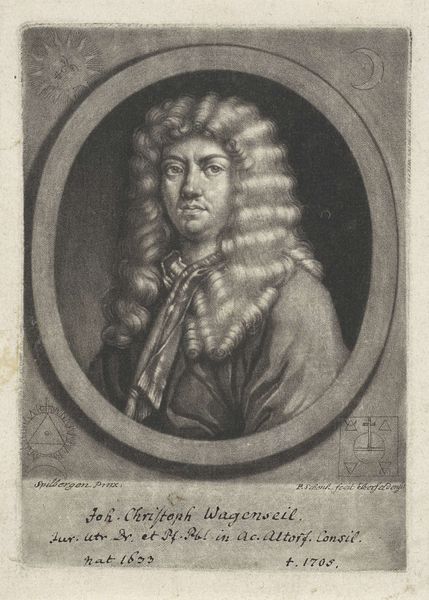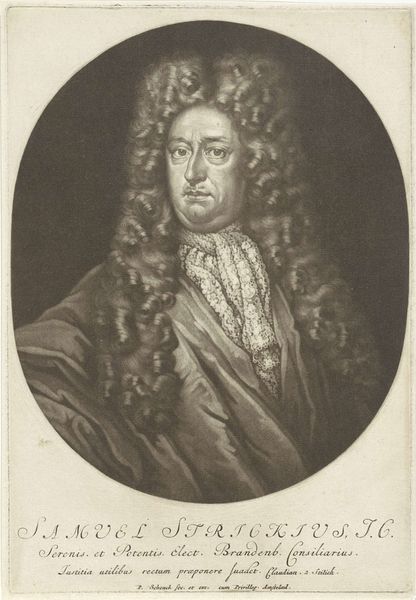
engraving
#
portrait
#
baroque
#
old engraving style
#
figuration
#
line
#
academic-art
#
engraving
Dimensions: height 184 mm, width 136 mm
Copyright: Rijks Museum: Open Domain
Curator: Here we have Pieter Schenk’s 1689 engraving, a portrait of Jacobus Streso. It's housed right here at the Rijksmuseum. Editor: My first thought? Restrained, yet there's a quiet power emanating from this clergyman, captured within that simple circular frame. The baroque wig adds a dramatic flair but his gaze seems very direct. Curator: Absolutely. Schenk, known for his detailed engravings, captures the sitter's essence through a carefully constructed visual language. Considering the social context, prints like these were critical in shaping public perceptions, almost a form of branding. How does this portrayal speak to ideas around gender and authority? Editor: Well, the very composition, with Streso enclosed in that oval, implies containment and control, very fitting to a cleric figure. The delicate lines, contrasting with the overall dark tonality, to me indicate a tension between spiritual rigor and performative piety. I'm intrigued by the poem below the portrait, almost acting as a promotional caption, making a claim for the righteousness of the figure. Curator: Yes! This points toward the political significance of such portraits. They reinforced existing hierarchies while communicating religious and social ideals. Schenk positions Streso not merely as an individual, but as a symbol of reformed authority and civic responsibility. How effective is it, do you think, for contemporary eyes? Editor: It's hard to say if its 'effective,' in that he feels very distant. Yet, the portrait still allows me to engage in a contemporary dialogue surrounding institutional power. The meticulous detail, like in his intricate wig, reads as both absurd and deliberate, forcing me to think critically about how appearances were constructed and consumed. Curator: A powerful point. This really highlights the ongoing relevance of art historical inquiry for current conversations. Editor: Exactly. Examining historical images and how they functioned within their time helps dismantle, or at least complicate, contemporary assumptions about representation and influence. It allows us to draw interesting, crucial connections, still relevant now.
Comments
No comments
Be the first to comment and join the conversation on the ultimate creative platform.
